Track Categories
The track category is the heading under which your abstract will be reviewed and later published in the conference printed matters if accepted. During the submission process, you will be asked to select one track category for your abstract.
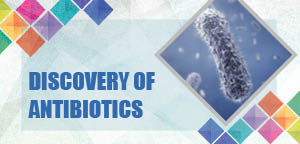
Innovation has been a noteworthy driver of advances in medication disclosure. Computerization, Nano fluidics, imaging, programming and test advances have assumed a noteworthy part in showing signs of improvement information, quicker. Is medication disclosure at such a propelled state, to the point that further upgrades are did not require anymore or practical? There are diverse feelings on this and a great part of the proof is narrative, yet innovation advancement is basic to the change of the medication disclosure process and worth talking about.

Key to all great antibiotic (or any other) treatment is conclusion to the principles. At whatever point an anti-infection is endorsed it ought to be for a particular finding whether it is a conditional clinical conclusion or not. An anti-infection ought not to be endorsed for a "urinary tract contamination" it ought to be recommended for cystitis, pyelonephritis or prostatitis for instance. Recommending and antibiotic for a "hack" is incredible. Hack could be a side effect of many conditions with pneumonia or serious COPD intensification being the main particular conditions for which anti-microbial treatment is demonstrated. Every time you mull over solution of an anti-microbial choose a particular determination. Your antibiotic decisions can then be educated by trusted treatment rules, for example, these made in the Vancouver Island Health Authority.
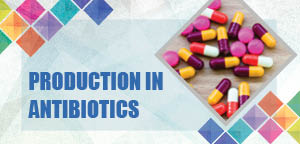
Antibiotics are resulting of optional digestion system which restrains development procedures of different life forms notwithstanding when utilized at low fixations. The antibiotic penicillin was found by Fleming in 1929. Albeit more than 300 anti-microbial mixes have been separated just 123 are as of now delivered by aging. Furthermore, more than 50 anti-microbials are created as semisynthetic mixes, and three anti-infection agents, chloramphenicol, phosphonomycin and pyrrolnitrin are delivered totally artificially.

Antibiotics are the medicines used to prevent and treat bacterial infections. Antibiotic resistance occurs when bacteria change in response to the use of these medicines. Bacteria, not animals or humans, become antibiotic-resistant. These bacteria may infect animals and humans, and the infections they cause are harder to treat than those caused by non-resistant bacteria. Antibiotic-resistant bacteria can spread to relatives, family members, classmates, and co-workers, and may threaten our community. Antibiotic resistance leads to prolonged hospital stays, higher medical costs, and increased mortality.
Antibiotic resistance is caused by the misusage and overuse of antibiotics, as well as poor infection prevention and control. Steps can be taken to reduce the impact and curb the transmission of resistance. Use antibiotics only when prescribed by an authorized health professional. Don’t use leftover antibiotics. Infections can be prevented by washing hands regularly, preparing food organically, avoiding contact with ill people and keeping vaccinations up to date.
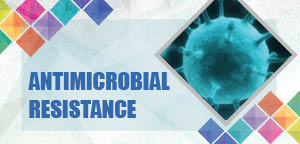
Antimicrobial resistance (AMR) is the capability of a microbe to prevent the effects of medication already used to treat them. Resistance emerges through one of three manners: natural resistance in certain types of genetic mutation, bacteria, or by one species acquiring resistance from another. Resistance can be present automatically because of accidental mutations; or progressive buildup over time, and because of over usage or misuse of antimicrobials or antibiotics. Resistant microbes are difficult to treat, compelling another medications or higher doses, which may be harmful or costly. Antimicrobial resistance is one of the causes for millions of deaths worldwide every year.
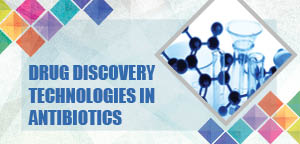
Innovation has been a noteworthy driver of advances in medication disclosure. Computerization, Nano fluidics, imaging, programming and test advances have assumed a noteworthy part in showing signs of improvement information, quicker. Is medication disclosure at such a propelled state, to the point that further upgrades are did not require anymore or practical? There are diverse feelings on this and a great part of the proof is narrative, yet innovation advancement is basic to the change of the medication disclosure process and worth talking about.

Antimicrobial medications are utilized to avoid or treat contaminations created by pathogenic microorganisms. The human body and nature contain numerous microorganisms, the vast majority of which live in a condition of adjust with the human host and don't bring about infection. At the point when the adjustment is problematic and contamination happens, attributes of the tainting microorganisms and the ampleness of host barrier systems are central point in the seriousness of the disease and the individual's capacity to regain.
Conditions that debilitate protection instruments increment the occurrence and seriousness of diseases and obstruct recuperation. Also, utilization of antimicrobial medications may prompt to genuine diseases created by medication safe microorganisms.
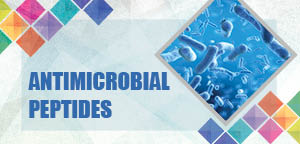
Antimicrobial peptides have been detached and described from tissues and living beings speaking to essentially every kingdom and phylum, going from prokaryotes to people. However, repetitive auxiliary and practical subjects in instruments of activity and protection are seen among peptides of broadly differing source and creation. Biochemical qualifications among the peptides themselves, target versus have cells, and the microenvironments in which these partners assemble, likely accommodate differing degrees of specific danger among different antimicrobial peptide sorts. Besides, numerous antimicrobial peptides utilize advanced and dynamic components of activity to impact quick and powerful exercises reliable with their probable parts in antimicrobial host barrier. In adjust, fruitful microbial pathogens have developed multifaceted and successful countermeasures to dodge presentation to and subvert components of antimicrobial peptides. A clearer acknowledgment of these restricting topics will essentially propel our comprehension of how antimicrobial peptides work in safeguard against disease. Moreover, this comprehension may give new models and systems to creating novel antimicrobial operators, that may likewise enlarge insusceptibility, reestablish power or intensify the components of traditional anti-microbials, and limit antimicrobial protection instruments among pathogens. From these points of view, the aim of this audit is to show the contemporary auxiliary and useful topics among components of antimicrobial peptide activity and protection.
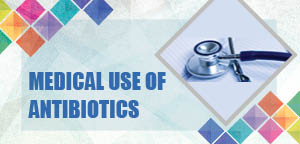
An antibiotic is given for the treatment of a contamination brought about by microorganisms or Bacteria. It is not successful against infections by viruses. On the off chance that you have a disease, it is imperative to know whether it is brought about by microorganisms or an infection. Most upper respiratory tract contaminations, for example, the basic icy and sore throats are brought on by infections - anti-infection agents don't conflict with these viruses. When the mindful pathogenic microorganism is now known or has been distinguished, complete treatment can be begun. This will for the most part include the utilization of a tight range antibiotic. To keep away from surgery anti-microbial might be given for non-confused intense an infected appendix. Viable treatment has been evidenced. Antibiotics might be given as a preventive measure (prophylactic) and this is generally constrained to at-hazard populaces, for example, those with a debilitated insusceptible framework (especially in HIV cases to avoid pneumonia), those taking immunosuppressive medications, growth patients and those having surgery. Their utilization in surgical systems is to help anticipate contamination of entry points made. They have an imperative part in dental anti-microbial prophylaxis where their utilization may counteract bacteremia and ensuing infective endocarditis. Anti-infection agents are additionally used to avert contamination in instances of neutropenia especially tumor related.
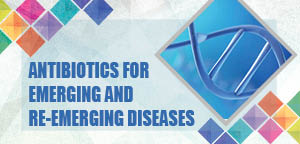
Antibiotics were the main viable treatment for skin inflammation. They are the most generally endorsed operators and are demonstrated for serious incendiary skin break out, broad trunk skin break out and direct facial skin inflammation not reacting to topical treatments. Reaction is variable; female patients with facial skin break out react more positively than male patients with stamped seborrhea and skin acne. Systemic antibiotics ought to be endorsed in a satisfactory measurement and the recurrence and span proceeded for whatever length of time that they are considered to work. Patients with skin inflammation are frequently regarded with numerous antibiotic agents and as a result, their vegetation is presented to a critical particular weight for resistance improvement.
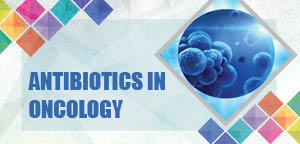
Down to earth rules for the conclusion and treatment of unending prostatitis are exhibited. Interminable prostatitis is delegated ceaseless bacterial prostatitis (culture-positive) and perpetual fiery prostatitis (culture-negative). In the event that constant bacterial prostatitis is suspected, in view of important indications or intermittent UTIs, fundamental urological conditions ought to be rejected by the accompanying tests: rectal examination, midstream urine culture and lingering urine. The determination ought to be affirmed by the Meares and Stamey strategy. Antibiotic treatment is prescribed for intense intensifications of unending prostatitis, endless bacterial prostatitis and perpetual provocative prostatitis, if there is clinical, bacteriological or supporting immunological proof of prostate contamination. Unless a patient presents with fever, anti-microbial treatment ought not to be started quickly aside from in instances of intense prostatitis or intense scenes in a patient with ceaseless bacterial prostatitis.
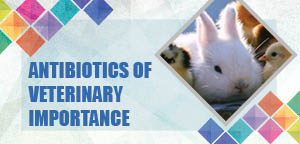
Utilization of anti-infection agents in homestead creatures is very overwhelming and broad, and has been a normal routine of ranchers in North America and Europe for a long while. Most meat, pork, poultry devoured by people contains little measures of anti-microbial. This is an aftereffect of endeavors to expand quality and amount of yield on ranches. The United States utilizes more than 29 million pounds of anti-infection agents in animals every year. The dominant part of medications is bolstered to creatures to advance their development in processing plant ranches. A production line ranch is normal for U.S. domesticated animal’s creation and comprises of keeping creatures in high-thickness restriction. Reliably utilizing drugs in homestead creatures raises worries this directing of anti-microbial has brought about an expansion in the anti-microbial safe microscopic organisms that can be destructive to people. Microorganisms in the human micro biome can figure out how to oppose more medications since people are presented to slight measures of antibiotics in the meats that they eat. Antibiotics are utilized as a part of creatures and can help microscopic organisms get to be distinctly impervious to the same or comparative medications utilized as a part of people.
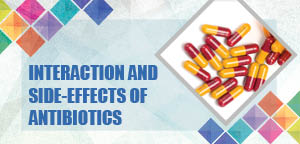
Basic reactions connected with anti-microbial incorporate loose bowels, heartburn and bloating, loss of craving and feeling debilitated, as indicated by NHS Choices. Antibiotic medications increment skin affectability to both common and simulated light. Anti-infection utilize can disturb the adjustments of microbes in the body, prompting to vaginal diseases in women and bringing on agitated stomach. Abuse of antibiotics can prompt to bacterial resistance. More side effects include Nausea, vomiting, headache, fever and swelling of face too.

Visit and improper utilization of antibiotics can bring about microscopic organisms or different microorganisms to change so anti-infection agents don't conflict with them. This is called bacterial resistance or antibiotic resistance. Treating these safe microscopic organisms requires higher measurements of pharmaceutical or more grounded antibiotics. As a result of antibiotic abuse, certain microorganisms have turned out to be impervious to even the most effective anti-microbial accessible today.
Antibiotic resistance is an across the board issue, and one that the Centers for Disease Control and Prevention (CDC) calls "one of the world's most squeezing general medical issues." Bacteria those were once exceptionally receptive to anti-infection agents have turned out to be increasingly safe. Among those that are getting to be distinctly harder to treat are pneumococcal contaminations (which cause pneumonia, ear diseases, sinus contaminations, and meningitis), skin contaminations, and tuberculosis.
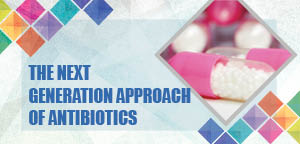
Wrong recommending, absence of consistence in taking pharmaceuticals and insightful spread uncontrolled utilization of medications prompted to development of multidrug resistance in clinically essential irresistible operators. More than 480000 new instances of multidrug-safe tuberculosis (MDR-TB) were accounted for by WHO in the year 2013 in hundred nations around the world. In this way, there is an earnest requirement for new era antibacterial which can successfully and unequivocally follow up on medication safe microorganisms. Distinctive methodologies of advancement of resistance in microorganisms include the progressions at sub-atomic level like transformations, over articulation of compounds and efflux.

The bacterial protein LexA may assume a key part in the obtaining of bacterial transformations offering imperviousness to quinolones and rifampicin. DNA harm initiates the SOS quality repressor LexA to experience autoproteolytic action. This incorporates the translation of qualities encoding Pol II, Pol IV, and Pol V, which are three unimportant DNA polymerases that are required for transformation in light of DNA damage. The anti-microbial activity against the pathogen can be viewed as an ecological weight. Those microbes with a transformation that permits them to survive live to imitate. They then pass this quality to their posterity, which prompts to the development of a completely safe settlement. Despite the fact that these chromosomal transformations may appear to profit the microorganisms by giving anti-infection resistance, they additionally present a cost of wellness.

Antimicrobial safe strains of microscopic organisms are an expanding risk to creature and human wellbeing. Resistance systems to go around the dangerous activity of antimicrobials have been distinguished and depicted for every single known antimicrobial at present accessible for clinical use in human and veterinary drug. Gained bacterial anti-microbial resistance can come about because of the transformation of typical cell qualities, the obtaining of remote resistance qualities, or a blend of these two components. The most widely recognized resistance systems utilized by microorganisms incorporate enzymatic debasement or adjustment of the antimicrobial, change in the antimicrobial target site, diminished cell divider penetrability to antimicrobials, and dynamic efflux of the antimicrobial over the cell layer. The spread of versatile hereditary components, for example, plasmids, transposons, and integrons has incredibly added to the fast dispersal of antimicrobial resistance among a few bacterial genera of human and veterinary significance. The adaptability with which microbes adjust to their surroundings and trade DNA between various genera highlights the need to execute powerful antimicrobial stewardship and contamination control programs in both human and veterinary drug.
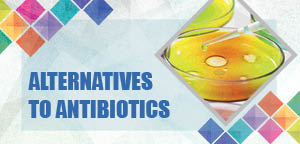
Germs are all over and everywhere. Some move to our bodies and benefit us, for example, the cordial microscopic organisms that colonize the linings of the insides, upper respiratory tract, and lower urinary framework, out-contending awful microorganisms, adding to safe protection and great absorption. Different organisms – infections, microscopic organisms, parasites – wreak devastation when they attack our bodies. Luckily, various herbs have antimicrobial impacts. A number of these herbs are culinary herbs and flavors, for example, garlic, ginger, thyme, and cinnamon. That implies, regardless of where you will be, you can likely locate a home grown partner at the neighborhood market. Herbs don't go about as fast or as strongly as medications. For genuine diseases, antibiotics can spare lives. Then again, herbs create fewer symptoms and don't appear to be connected with the microbial resistance that sicknesses anti-infection agent.
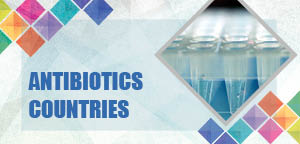
With antibiotic resistance and abuse a noteworthy worldwide concern, and a critical test for worldwide social insurance suppliers and strategy producers alike, understanding the world's utilization of anti-infection agents is a vital step.
It’s in Turkey where individuals take the most antibiotics – 42.2 measurements are endorsed per 1,000 individuals consistently. Greece is next with somewhere in the range of 10 dosages bringing down at 32.2. The main three is finished by France with 30.1. The rundown is altogether involved European countries, with Belgium, Italy and Luxembourg every returning figure in abundance of 25 measurements endorsed every day. Spain, Ireland, Slovakia and Poland finish the main 10. The OECD normal sits at 20.7, with the most minimal utilization of anti-infection agents found in Chile – only 9.4 measurements.